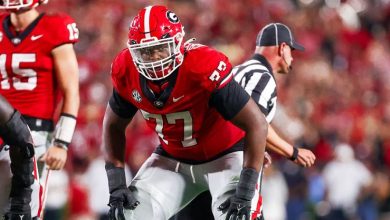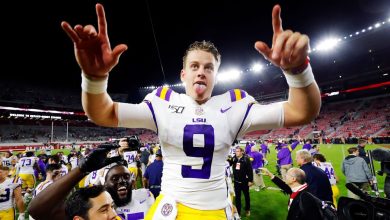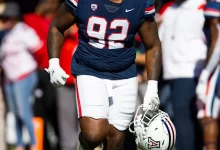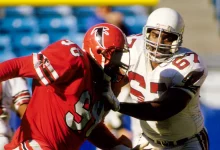What Recent Hiring/Firing Trend Means for Auburn’s Hugh Freeze
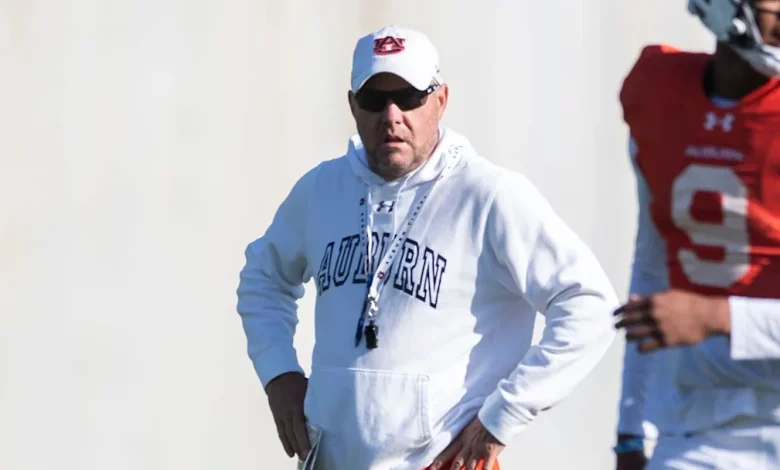
What Recent Hiring/Firing Trend Means for Auburn’s Hugh Freeze
College football coaching is often described as one of the most high-pressure jobs in sports. The spotlight is intense, the expectations sky-high, and the margin for error razor-thin. Over the past few years, the sport has witnessed a flurry of coaching hires and firings, driven by performance pressures, fan demands, and shifting program goals. For Auburn University and head coach Hugh Freeze, understanding these recent trends is critical to navigating the volatile landscape of SEC football and positioning the Tigers for sustained success.
This article explores the latest hiring and firing patterns across college football, particularly in the SEC and Power Five conferences, and breaks down what these trends mean for Hugh Freeze’s job security, Auburn’s football program, recruiting, and long-term outlook.
—
## The Coaching Carousel: A Look at Recent Trends
### A Volatile Environment
In recent years, coaching changes have become more frequent and less predictable, fueled by:
* **High expectations and quick triggers:** Programs are less patient with subpar results.
* **The transfer portal and NIL era:** Player movement and compensation have altered team dynamics.
* **Pressure from boosters and fanbases:** Vocal stakeholders demand immediate success.
* **Conference realignment and media deals:** Increased revenues heighten stakes.
### Notable SEC Coaching Changes
* Several high-profile firings and hirings in the SEC reflect the cutthroat nature of coaching jobs.
* Programs like Texas A\&M, Florida, and LSU have experienced coaching upheaval recently.
* New hires often come with pressure to deliver quickly, amid fanfare and skepticism.
### The Rise of Younger Coaches and Offensive Innovators
* There is a growing trend toward hiring younger coaches with innovative offensive philosophies.
* Programs seek coaches who can adapt quickly to new rules, NIL dynamics, and recruiting challenges.
* This trend puts pressure on established coaches to evolve or risk replacement.
—
## Auburn Football’s Recent Coaching History
### The Gus Malzahn Era and Its End
* Malzahn brought Auburn a national championship game appearance in 2013 but ultimately was dismissed after a decline in performance.
* His departure reflected Auburn’s demand for consistent top-tier success.
### The Transition to Bryan Harsin
* Harsin’s hiring signaled a new direction but was marred by underperformance and controversy, leading to his firing during the 2022 season.
* This instability highlighted Auburn’s impatience with mediocrity and growing frustration.
### Enter Hugh Freeze
* Freeze was hired in late 2022 with hopes of stabilizing and revitalizing Auburn’s program.
* His track record at Ole Miss and Liberty, plus his offensive acumen, made him a promising candidate.
—
## What Recent Hiring/Firing Patterns Mean for Hugh Freeze
### Job Security in a “Win Now” Culture
* Auburn’s past rapid coaching turnover sends a clear message: Freeze must deliver results quickly.
* The SEC’s increasing competitiveness means Auburn can’t afford prolonged rebuilding.
* Freeze is under pressure to show tangible improvement in wins, recruiting, and program culture.
### The Importance of Quick Impact
* Coaches who adapt fast and generate excitement often survive longer.
* Freeze’s ability to connect with players, implement his offense, and build relationships will be critical.
* Early success, especially in high-profile games, can buy more time.
### The Recruiting Battlefield
* With the transfer portal and NIL changing recruiting, Freeze must be savvy in talent acquisition.
* Auburn needs Freeze to compete with SEC powerhouses for elite prospects.
* Coaching hires and firings around the conference influence recruiting landscapes and rivalry dynamics.
### Fan and Booster Expectations
* Auburn’s passionate fanbase expects competitiveness and bowl appearances.
* Booster support is essential for Freeze, who must maintain strong relationships with stakeholders.
* Public perception shaped by recent hiring/firing stories affects patience and pressure on Freeze.
### Coaching Stability as a Competitive Advantage
* Amid SEC coaching volatility, stability can be a strength.
* If Freeze can build consistent success, Auburn could benefit from continuity while rivals cycle through changes.
* Stability also helps with player development and recruiting trust.
—
## Challenges Hugh Freeze Faces Amid the Trend
### Managing Expectations vs. Realistic Timelines
* Auburn’s history pressures Freeze to deliver quickly, but rebuilding takes time.
* Balancing immediate wins with long-term program health is a delicate act.
### Evolving Offensive Strategies
* The game is rapidly evolving with new offensive schemes and defensive counters.
* Freeze’s ability to innovate while leveraging his existing knowledge is crucial.
### Navigating NIL and Player Transfers
* Freeze must maintain a strong team culture to retain players amid transfer opportunities.
* NIL deals affect recruiting and team dynamics, requiring careful management.
—
## Opportunities Presented by the Coaching Landscape
### Leveraging Past Experience
* Freeze’s experience at Ole Miss, where he revitalized a program, serves as a blueprint.
* His familiarity with SEC recruiting and coaching rivalries positions him well.
### Potential for Growth and Legacy Building
* Auburn’s coaching history means Freeze’s success could cement a lasting legacy.
* Winning in the SEC has outsized rewards, and stability at Auburn could enhance his profile.
### Capitalizing on Stability
* If Auburn can avoid the coaching carousel’s churn, it can build a foundation few SEC programs enjoy.
* Stability attracts recruits, improves player development, and fosters fan loyalty.
—
## What Auburn Fans and Stakeholders Should Watch
### Early Season Performance and Signature Wins
* Freeze’s initial season results and key victories will shape opinions.
* Wins against rivals and top SEC teams will matter most.
### Recruiting Class Rankings and Player Development
* Monitoring Auburn’s recruiting progress under Freeze is essential.
* Player development and NFL draft success signal program health.
### Program Culture and Off-Field Reputation
* Freeze’s leadership style and program culture set the tone for long-term success.
* Positive culture fosters player retention and public goodwill.
### Booster Relations and Resource Allocation
* Ongoing support from boosters will influence program investments.
* Freeze’s ability to communicate and align with boosters matters.
Navigating a High-Stakes Coaching Era
The recent coaching hiring and firing trends in college football — especially in the SEC — underscore an unforgiving environment where success is demanded immediately, and patience runs thin. For Auburn’s Hugh Freeze, these trends present both daunting challenges and promising opportunities.
His ability to adapt to a rapidly changing game, deliver results on the field, recruit top talent, and maintain strong relationships with fans and boosters will determine his tenure’s length and legacy. Auburn’s past impatience with coaching stability means Freeze faces pressure to build quickly, but the potential rewards for success are immense.
If Freeze can steer Auburn through this high-stakes coaching landscape, he won’t just be surviving the trend — he could define a new era of Auburn football dominance.



